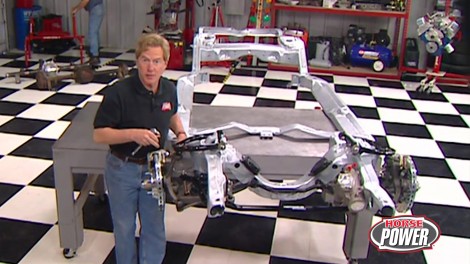
CHEVELLE CHASSIS, ROW - HATTIESBURG
Working from the frame up, we transform Chuck's '65 Chevelle grocery getter into a high-performance machine by installing a new, sturdy chassis outfitted with tubular control arms, upgraded brakes, and a quick-ratio steering box. After the revamp, we hit the drag racing scene at the Hub City Shootout in Mississippi for some Southern-style racing excitement.
Season 5
Episode 19
Hosts: Joe Elmore, Chuck Hanson
First Air Date: September 23, 2022
Duration: 21 minutes 43 seconds




























